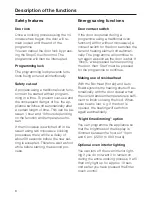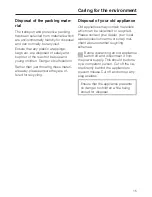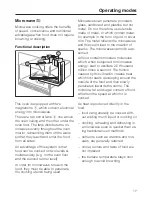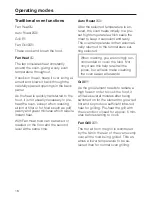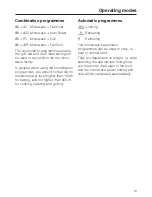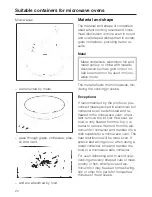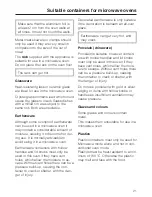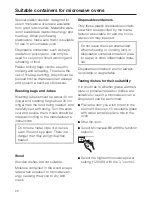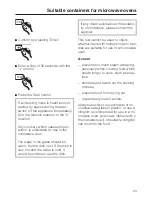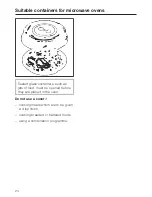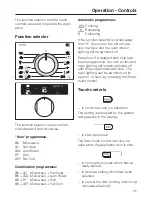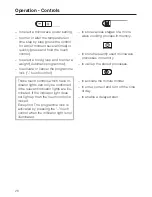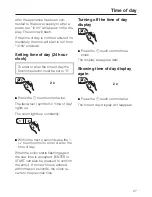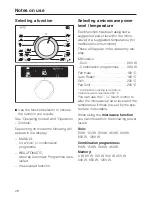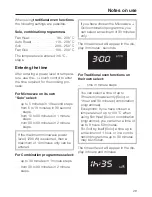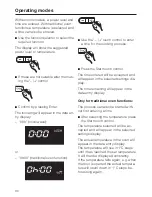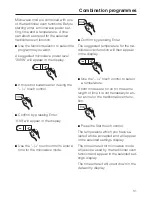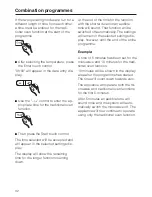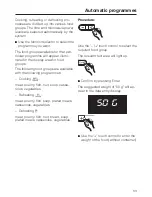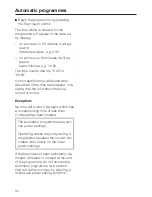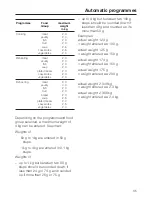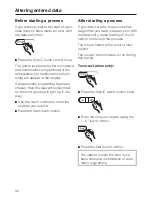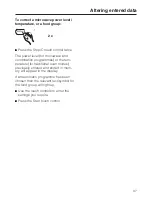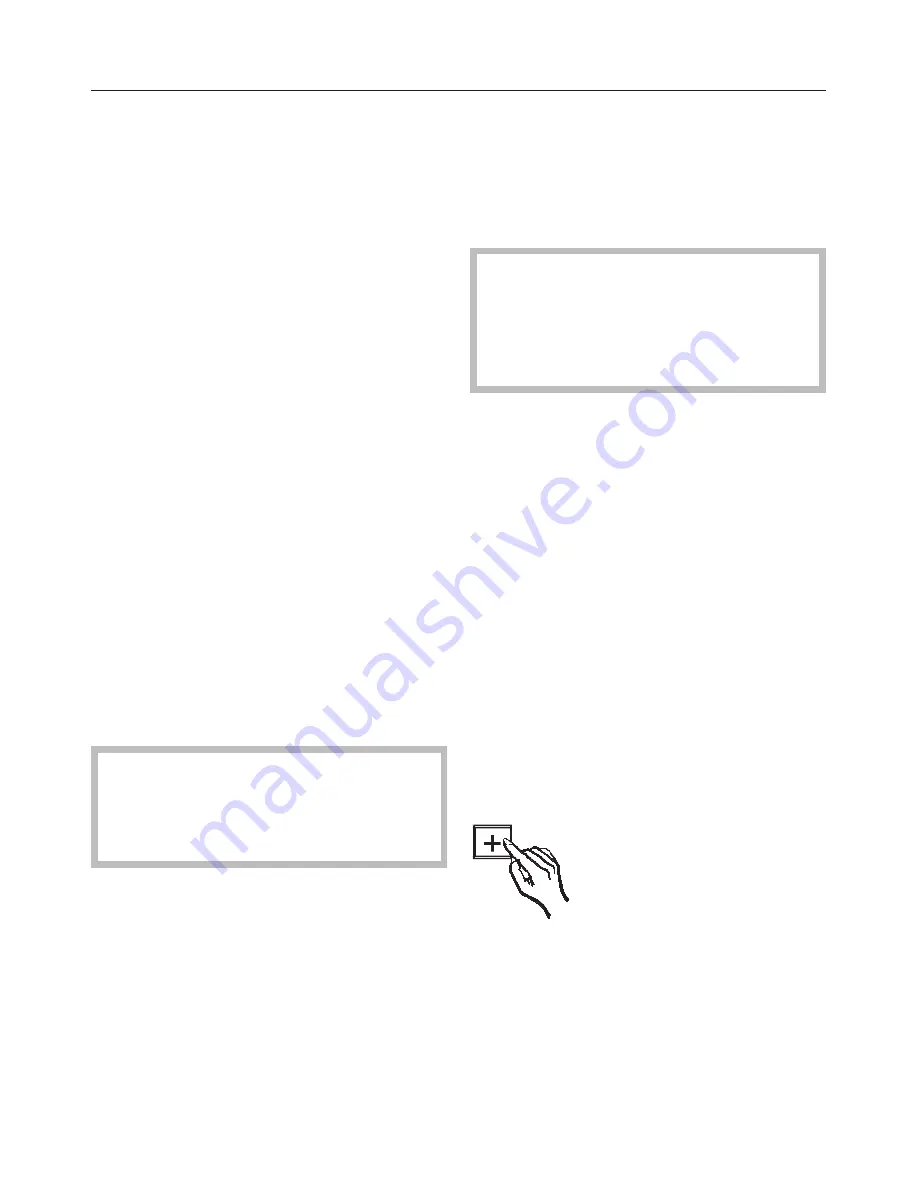
Special plastic utensils, designed for
use in microwave ovens are available
from good retail outlets. Melamine ware
is not suitable as it absorbs energy and
heats up. When purchasing
plasticware, make sure that it is suitable
for use in a microwave oven.
Disposable containers, such as trays
made from polystyrene, can only be
used for very short timed warming and
reheating of food.
Plastic boiling bags can be used for
cooking and reheating. To reduce the
risk of the bag bursting, they should be
pierced first so that steam can escape
and prevent a build-up of pressure.
Roasting bags and -tubes
Roasting tubes should be about 40 cm
longer and roasting bags about 20 cm
longer than the food being roasted, and
carefully tied with string. Turn the ends
over and secure them. Holes should be
made according to the manufacturer’s
instructions.
Do not use metal clips or wire ties,
even if bound by paper. There is a
danger that they will ignite when
heated.
Wood
Wooden dishes are not suitable.
Moisture contained in the wood evapo-
rates when exposed to microwave en-
ergy, causing the wood to dry and
crack.
Disposable containers
Only those plastic disposable contain-
ers which are specified by the manu-
facturer as suitable for use in a micro-
wave oven may be used.
Do not leave the oven unattended
when reheating or cooking food in
disposable containers made of plas-
tic paper or other inflammable mate-
rial.
Disposable containers are not always
recyclable or degradable.
Testing dishes for their suitability
If in doubt as to whether glass, earthen-
ware or porcelain plates or dishes are
suitable for use in a microwave oven, a
simple test can be performed:
^
Place the item you wish to test in the
centre of the oven, fill a suitable glass
with water and also place this in the
oven.
^
Shut the door.
^
Select Microwave
h
with the function
selector.
^
Select the highest microwave power
setting (1200 W) with the "+" control.
Suitable containers for microwave ovens
22
Enter

